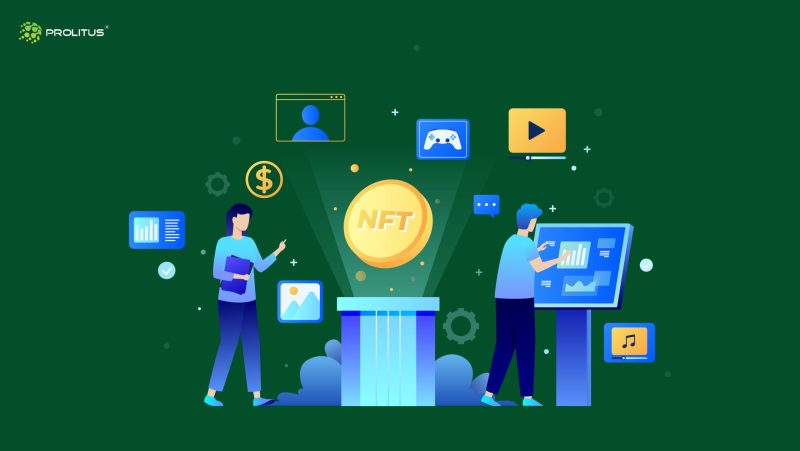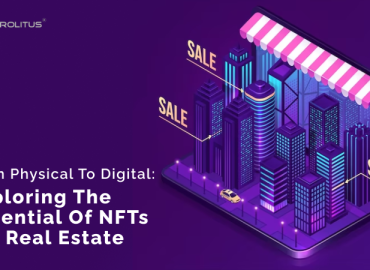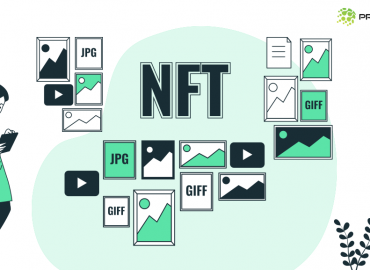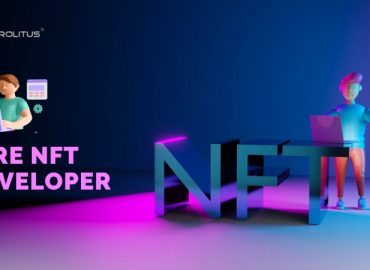What is NFT and what makes it the talk of the town?
In the year 2017, the whole world was shocked to hear about an incident in New York. The news of the incident was unlike any other and spread like wildfire. At the end of a gruesome nineteen-minute bidding war, a Saudi Arabian prince finally got hold of Leonardo da Vinci’s Salvator Mundi for a monolithic price of over 450 million.
For the general public, this was a head-scratching moment, as they could not believe that someone would pay this much for a piece of art.
These kinds of acts are pretty common in the art industry; people who admire an art piece try to put a price on it. These activities have been in business for a long time. And it has reached such a platform that even non-art enthusiasts know one or two things about this industry.
Right now, the whole world is rushing online, so this passion for collecting artefacts has also joined this bandwagon. This can be seen while analyzing the NFT trend that has taken the world by storm.
What are NFTs? One might wonder. NFT stands for Non-fungible Token, and these are assets that you acquire digitally. They can also be called your cryptographic assets, and these assets have a unique identification code and metadata. This makes it one of a kind and different from a fungible token. This makes it valuable in the eyes of a genuine collector.
These digital assets could be anything. Just like in the art world, people buy paintings. Similarly, they can buy a digital version of that same painting. Most of these collectibles are pictures, so any picture you have could be turned into an NFT. If it sells well and has a unique value, it could be sold for millions of dollars.
Along with pictures, video clips are also being converted into NFTs and are being sold for their value.
How do NFTs work?
NFT works on blockchain technology; each transaction on the NFT network is coded cryptically and stored in blocks.
This blockchain technology is nothing new; it was created even before the turn of this decade. Since its inception, it has seen recent popularity among the crowd, and everyone wants a piece of this pie.
A blockchain is a digital ledger of transactions across several computers linked in a peer-to-peer network. NFTs are unique crypto tokens that use the blockchain as a decentralised record of the asset’s history and who owns it now.
These tokens are compatible with Ethereum-based projects as most of the NFTs are part of the Ethereum blockchain at a high level.
With the help of the Ethereum network, people could create any kind of art they like. It could be a personal picture, a painting, a picture of some events, video clips of some memorable events, pieces of music, and more. Anything the creator believes is collectible, would like to have with them, and is willing to pay any price can be turned into an NFT and sold on various digital markets.
Once the deal is done, the ownership of the token is transferred to the buyer, the same information transaction is recorded, and a new block is added to its chain.
Now, the creator has no right over the art he sold, and anyone wishing to acquire the same piece has to make a deal with the current holder of that art. With each purchase and sale, new blocks are added to the network.
Are NFTs and cryptocurrencies fruits from the same tree?
People frequently misinterpret the meanings of words like NFT, cryptocurrency, Blockchain, Bitcoin, Solana, Ethereum, and many others that are tossed around in casual conversations, and without any multi-level understanding.
Although the basics behind these words or the things that connect all these worlds may be the same, they are very different when studied in depth.
Cryptocurrencies and NFTs both work on the same blockchain technology. The transaction records of both are being recorded and saved securely in the form of blocks. making them either unchangeable or malleable.
Both are considered tokens, but the key difference is that cryptocurrencies are fungible tokens and NFTs are non-fungible tokens. In simple terms, as of now, there are over a thousand cryptocurrencies, and each currency has millions of coins, each one identical to another, all having the same value. If we replace one coin of a currency with another coin of the same currency, it won’t make any difference.
On the other hand, NFTs are one-of-a-kind; only one exists in the entire space. This is what makes them valuable. Specialization and uniqueness are some of the high factors affecting the price fluctuation of art, sometimes making them worth millions.
How can you ride the bandwagon to find/create something unique and make money with it?
Let’s see first what one can do to become a buyer in this market.
Most marketplaces use the Ethereum network to power their transactions. Hence, you will need to have ether in your wallet to buy NFTs. Once you have ether in your Ethereum-compatible crypto wallet, you must sign up for NFT marketplaces like OpenSea, Rarible, SuperRare, and Foundation. And link your cryptocurrency wallet with them. Then all you have to do is browse the marketplace, find something that you want to buy or invest in, place a bid, and if it’s accepted, you will become the rightful owner of that NFT.
Now let’s see what steps one needs to follow to be a seller in the NFT marketplace.
The first thing you need to discover before starting your journey is finding a niche. The frontrunners of this marketplace have chosen their respective niches and are building their organization around them. Then you need to create an Ethereum wallet and add some coins to it. Find an NFT marketplace, connect your wallet with that marketplace, upload and mint your digital file, and write the title and description. Pick the price at which you want to sell, and then keep an eye on the bids. As soon as you find the offer you like, you accept it and sell the NFT.
You can create your own NFT marketplace to sell your art, so instead of using any other market, you can make one from scratch and sell NFTs. With this, you will gain more visibility and revenue generation.
It is also not a problem if you are new to this concept. You can always hire companies to white label the NFT marketplace for you.
How Prolitus can help you with White Label NFT Marketplace Development
The NFT marketplace is a million-dollar revenue system. If your token has what it takes, you will become an overnight millionaire, but to start from scratch, you will need strong shoulders to build your business with it.
Prolitus is one of the leading companies in the crypto space. Our team of experts has rich experience in developing blockchain technology, which empowers us to create a white-label multichain NFT marketplace best suited for our client.
Prolitus provides white-label NFT development that is highly scalable with enterprise-level architecture and has military-grade security. Our UI/UX team’s in-depth knowledge of ERC-721 and ERC-1155 standards and smart contracts will help you design a unique white-label multichain NFT development that fits with your business goals and makes you the leader in the NFT sector.
Can we call NFT modern-day art fanaticism? Will this bubble burst?
The idea of NFT that has been talked about here is easy to grasp if you look at the art market and how paintings and other artifacts are bought and sold.
The significant difference is that paintings and other tangible artifacts are physically brought and can be stored anywhere, and here the NFTs are bought and sold digitally and stored digitally. There is no actual product that you are betting your money on.
The NFT market is speculative; it is driven by uniqueness, scarcity, and most importantly, if dented in today’s terms, fear of missing out. Although the market is built on a solid basis, it is currently driven by emotions. People are buying an NFT just because it’s a trend. Many people want to support art. If you want to support an independent artist and don’t mind losing money, NFTs can be a great collectible for your digital library. However, there’s no guarantee that the NFTs you buy will go up in value over time.
Don’t jump straight into the bull race. First, find an entrance and exit, then learn to tame the bull and predict its moves; then you can put your expertise into play. And if you don’t have much experience, you can always ask for help. Our team at Prolitus works 24/7 to solve every query you might have.





